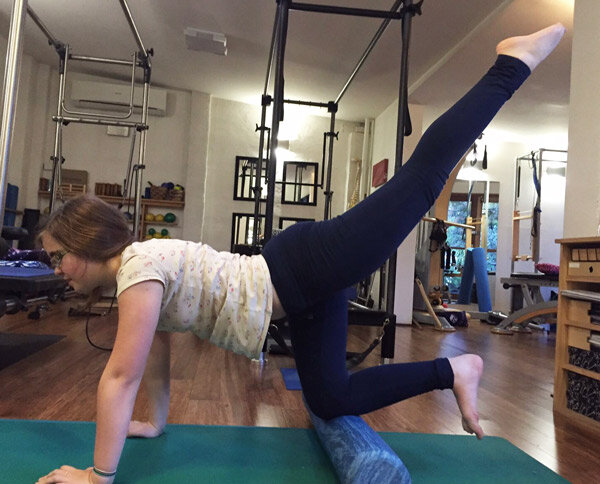Clinical Pilates for Blind Clients
It could be easy to dismiss Pilates as an activity for someone who is blind or has a sight disability but given correct support and guidance it can invoke confidence. During my time working at Anna Tetlow Pilates in Melbourne, I gained experience working with blind and partially blind clients. I found that modifications can be made that ensures their lack of sight is not a barrier for them to practice Pilates.
ONE OF JULIANA’S BLIND CLIENTS AT ANNA TETLOW PILATES
Physical skills such as balance, body awareness, coordination, strength, spatial awareness and confidence can all be improved through Pilates and in most cases will carry over into providing benefit in the person’s every day life. Pilates focuses on mind and body connection, relies on body awareness and precision of movement. This does not mean that a blind individual cannot practice Pilates. My experience has enabled me to adapt my teaching methods and exercises where necessary to provide a nurturing practice that builds self-confidence.
It should be taken into account that more energy is exerted for blind persons when performing their everyday activities and therefore Pilates, as a slow form of controlled exercise, is perfect for them. Physical skills such as balance, co-ordination and spatial awareness can be improved, which will also benefit them in everyday life.
I always try to work on breathing at the beginning of the session to try and encourage people to time movement with their own breath. This helps them keep calm and in control of their own pace and movements without any surrounding distraction.
clinical pilates double bay - JULIANA WORKS WITH A RANGE OF CLIENTS INCLUDING BLIND OR VISUALLY IMPAIRED, DANCERS, PREGNANT CLIENTS AND THE ELDERLY. IMAGES COURTESY OF ANNA TETLOW PILATES
The obvious adaptation made to my teaching is increased auditory and kinaesthetic cues rather than visual. I adopt a very “hands-on” approach as these tactile corrections are essential. When visual or auditory cues are insufficient, I guide the person’s body to move in the correct pattern while explaining how each movement should feel.
If you have a family member or friend that you think may be interested in or benefit from Pilates I would love to meet them!
Juliana x
x




